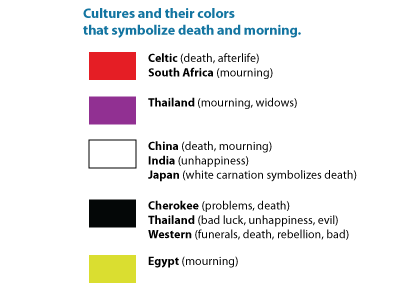Color
Cultural groups around the world perceive colors differently therefore, small business owners making adaptations to their Web sites need to remember that certain colors can hinder potential connections with international customers. Color preferences are also thought to predict consumers’ behaviors – an idea that has stimulated research by large corporations hoping to capitalize on the buying power offered in different international markets.
Using culturally appropriate colors for international audiences is now considered an important component of Web site marketing for small business owners as well as the large corporations. Small business owners should have a clear idea of the international market(s) they have chosen for global e-commerce expansion and research the meanings and/or connotations of colors in those chosen market(s).
Understanding the meanings behind certain colors can help a small business owner present culturally appropriate Web site content to his or her target audiences. Knowing what colors not to choose is sometimes more important than choosing the perfect colors for an audience.

According to one author, the use of unfavorable colors in foreign cultures can cause “strategic failure” (Aslan 2006, 24). Three large companies have provided clear examples of such mistakes; Samsonite used the colors purple and black when advertising its products to Mexico; Pepsi used ice blue in Southeast Asia, and United Airlines concierges wore white carnations on Pacific routes (Aslan 2006). In each of these situations, the companies overlooked the fact that the colors used in the target markets symbolize death and mourning.
The following resources are recommended for finding information about the meanings of different colors:
Sibagraphics
http://www.sibagraphics.com/colour.php
This Australian Web site design company offers free, user-friendly information about both general meanings of color as well as culture-specific meanings.
Color Wheel Pro
www.color-wheel-pro.com/color-meaning.html
This link provides basic information about the meaning of colors, although this information is generalized and not presented in a culture-specific manner.


